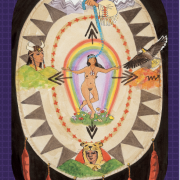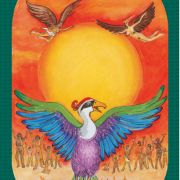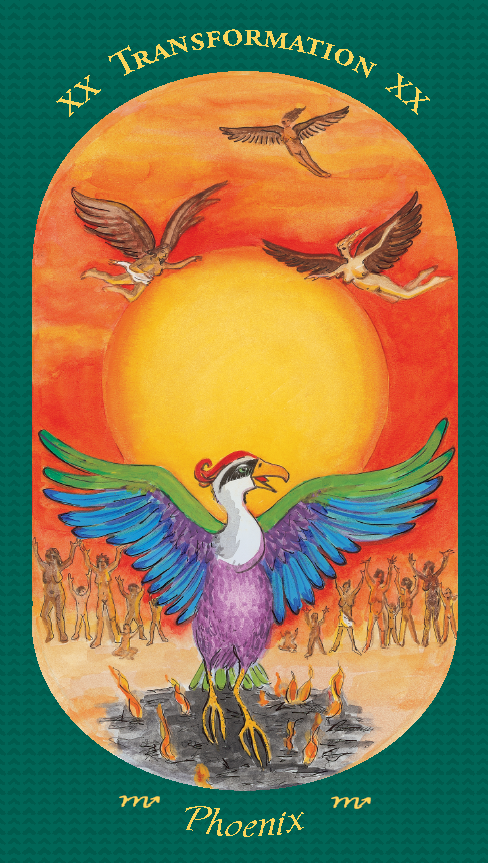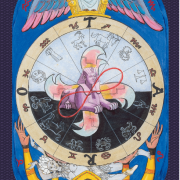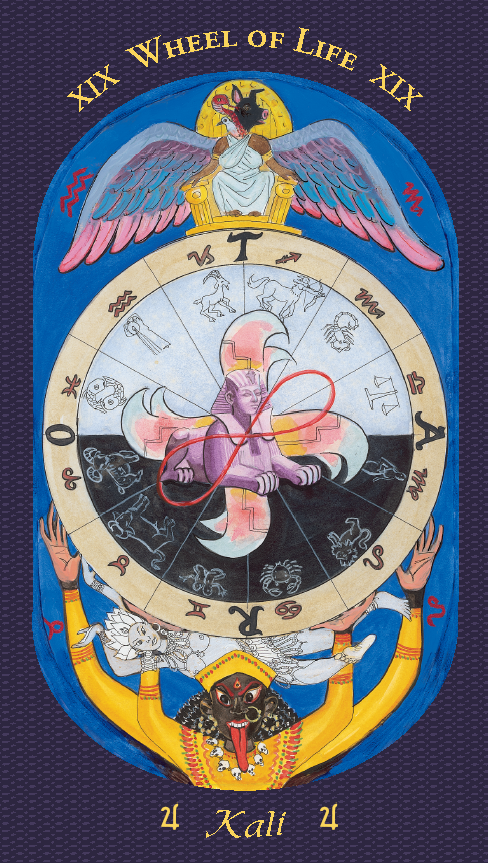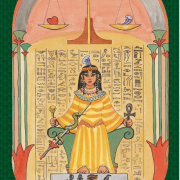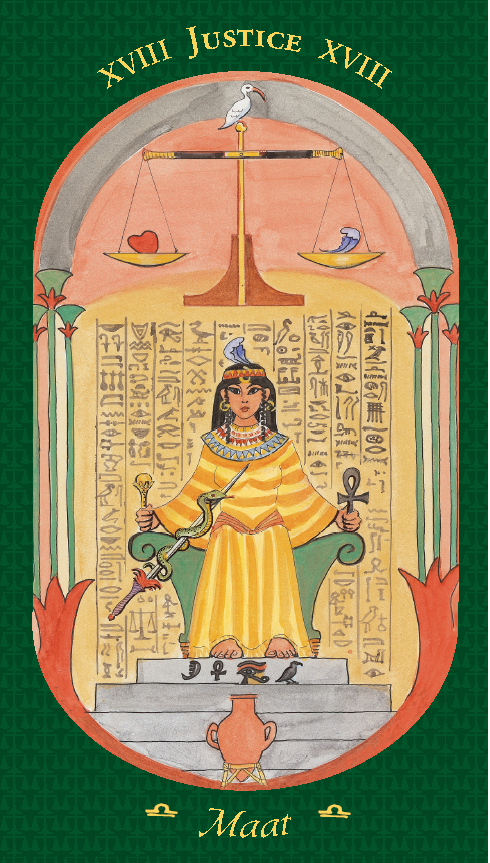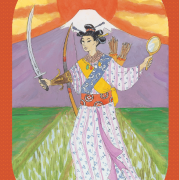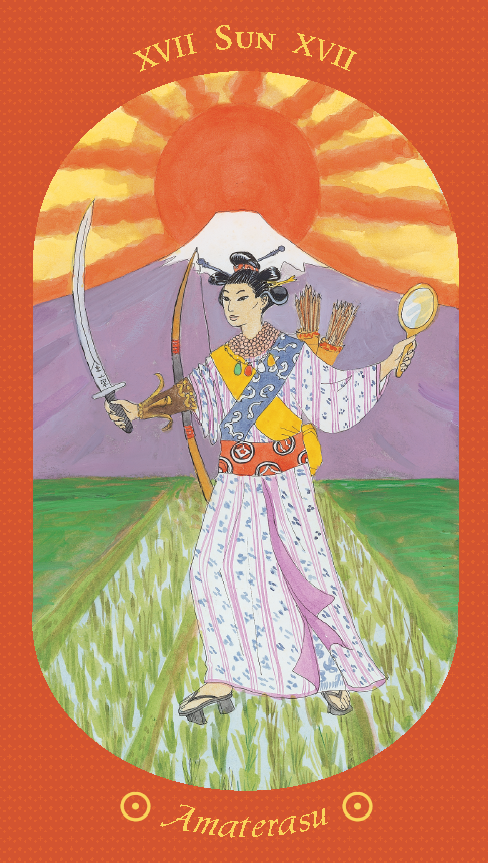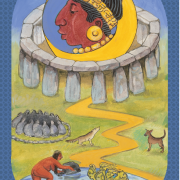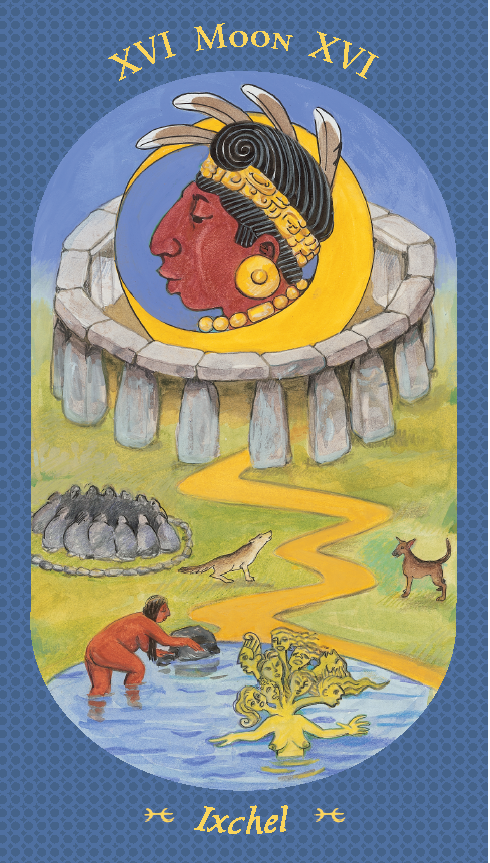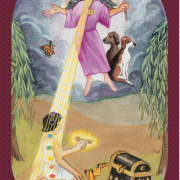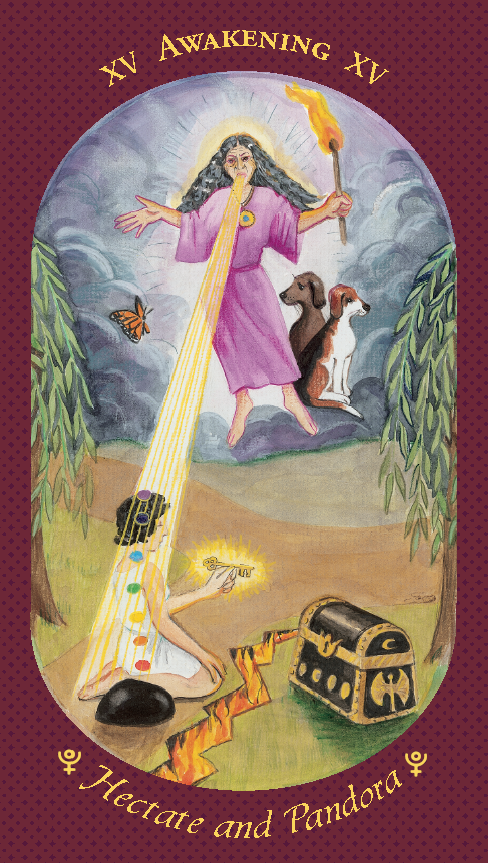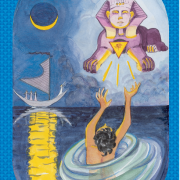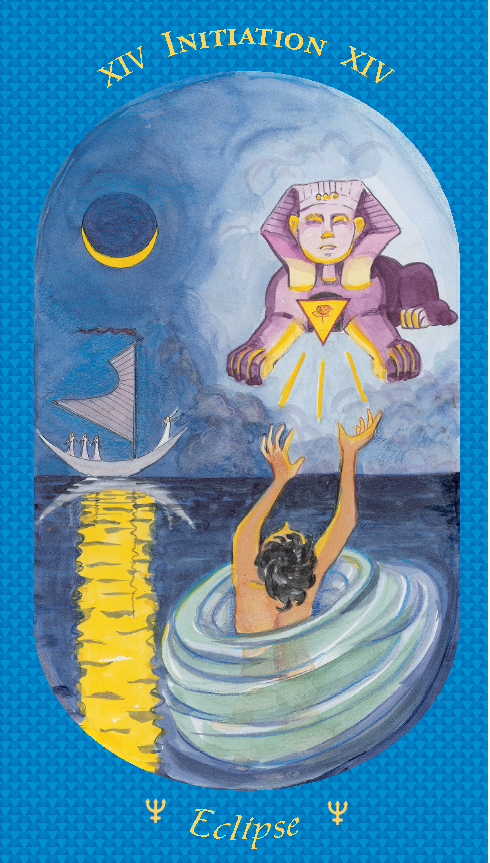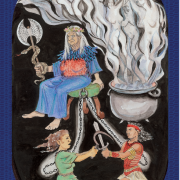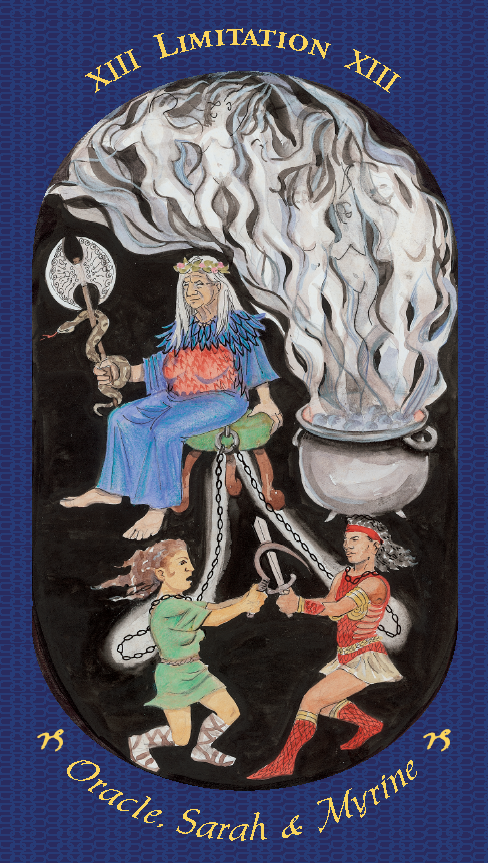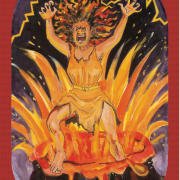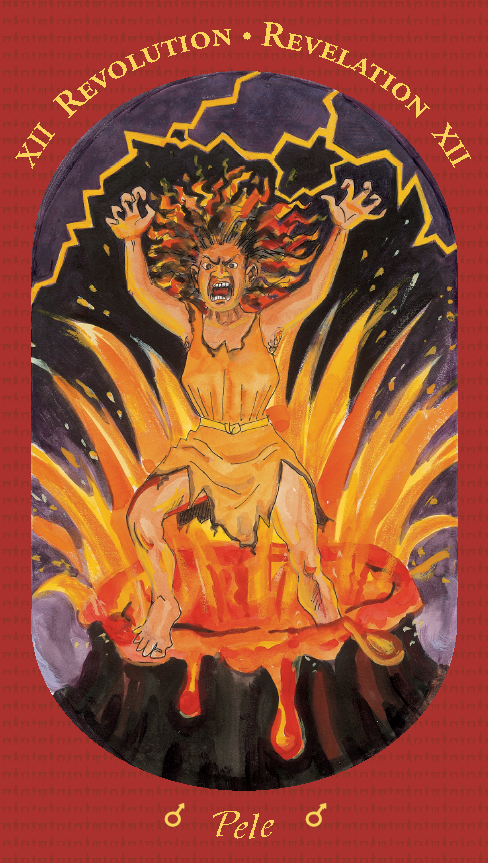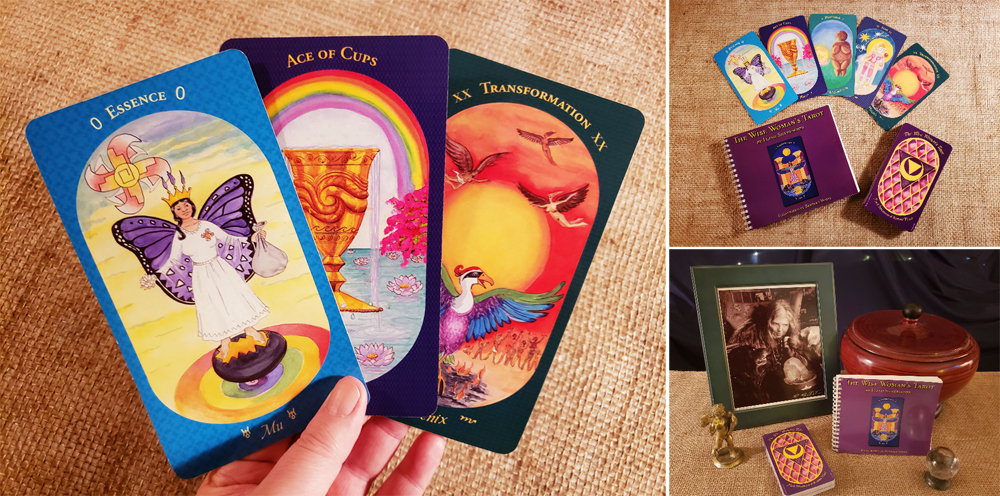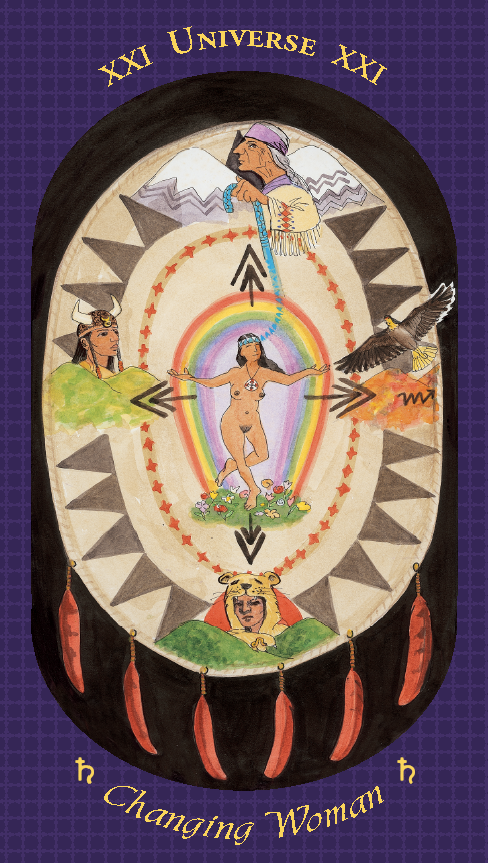
KEYWORDS: Expansion, cycles, travel.
The Universe represents the final stage of the descent of spirit into matter. Here we emerge on the planet in our present form, to deal with the joys and struggles of living in a material world.
For the last card of the Major Arcana, I chose the Native American image of Changing Woman. She is an anthropomorphic figure representing nothing less than Mother Nature, bringer of the changing seasons and cycles of life, death and rebirth.
The Navajos’ Changing Woman is similar to the Taoist concept of nature, in that both believe in “Walking in the Trail of Beauty.” “The Apache called the earth goddess by this name (Changing Woman), for she never grew old. When her age began to show, she simply walked toward the East until she saw herself coming toward herself. She kept walking until her young self merged with her aging self and then, renewed, returned to her home.”
This concept of cyclic renewal is a very important aspect of this card for many reasons. Trump XXI is not the end of the journey for the cosmic wanderer of the Essence card; rather, it is a new beginning on a different, more earthly level of development and awareness.
Saturn, the planetary ruler of this card, is the guardian of the Laws of Nature and her endless cycles. The ringed planet brings momentum for change in 7-year cyclic patterns and in multiples thereof; the notorious “Saturn Cycle” visits us roughly every 28 years.
The Universe of Changing Woman represents the final rung on the ladder of initiation. It is now time for her to “meet herself” and become at once the child and the crone. According to Navajo lore, Changing Woman brought forth the Navajo people parthenogenetically by rubbing her skin, again demonstrating her ability to change and renew.
“It is Changing Woman who teaches the flow of life, the restlessness of the sand as it flies with the wind, the wisdom of the ancient rocks that never leave their home, the pleasure of the tiny sapling that has risen through them.”
To illustrate this powerful image, I have placed all the aspects of Changing Woman and her Universe inside a shield. In Native American tradition, shields are designed as sacred magical tools; they protect the bearer or tribe from various negative influences, and they are a mark of achievement. To “Walk in the Trail of Beauty” with Changing Woman, with full understanding and acceptance of the nature of her cycles, is to bear a magnificent shield indeed, shielding us from the vissisitudes of ignorance and unawareness.
In the center of the shield, Changing Woman stands in a dance-like posture. Her arms and head form the triangle of spirit, over crossed legs representing the cross of matter, i.e., spirit over matter. She stands naked on a bed of flowers, surrounded by the rainbow, which was her bed and blanket as an infant.
From her body emanate the four mountains of the compass points, each portraying the appropriate season and astrological symbols. A turquoise band is wrapped about her temples, connecting her to her crone image which appears above her.
The mountains to the East feature Changing Woman’s autumn palette of colors at work, she soars above in her guise as the Eagle, during the fixed watery sign of Scorpio. Hallowmas is the witches’ new year.
To the North, snow caps the barren wintry peaks, which are presided over by “Grandmother Who Walks With A Turquoise Cane,”56 during the fixed airy sign of Aquarius.
To the West, the mountain is in full bloom as the earth rejoices in Changing Woman’s rebirth from her snowy winter blanket. Here, she holds court dressed in a bull-buffalo headdress, in honor of the earthy fixed sign, Taurus.
In the South, we see the fiery-red mountains of summer, guarded by a cat-like Changing Woman draped in a cougar skin to celebrate the fixed sunny sign of Leo.
In the Universe, all things change, evolve and grow within the cyclical structure of nature’s eternal rhythm. To resist with human audacity by trying to reweave her intricate web of life is to destroy life. To dance to the beat of her drum and answer the call of her voice is forever to Walk the Trail of Beauty.
When receiving this potent image in a reading, be aware that your life is invoking a period of growth, expansion and success. Change may well provide a route or gateway for your expanded consciousness. Don’t resist; enjoy the dance of your liberation as you become one with the Universe.

